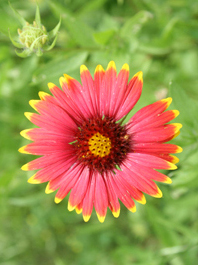

Scientific Name: Plantae (also known as Chlorobiota and Viridplantae)
Status: Extant (alive today)
Oldest fossil anywhere: Proterozoic of Australia (about 800 million years old)
Oklahoma fossil record: In rocks deposited during the Devonian through Cretaceous Periods, and the Miocene and Pleistocene Epochs.
All organisms that capture sunlight in order to make sugars for food—a process called photosynthesis—need chemicals called pigments to absorb the light. Those pigments give a photosynthetic organism its color and different organisms have different sets of pigments.
Green plants include all organisms that use two specific pigments—chlorophyll a and chlorophyll b—to capture the Sun’s energy to make sugars. Green plants may use also other pigments (which is why leaves change color in Autumn), but always use both chlorophyll a and chlorophyll b.
Botanists recognize two groups within green plants, land plants and green algae.
Featured Links

Land plants



